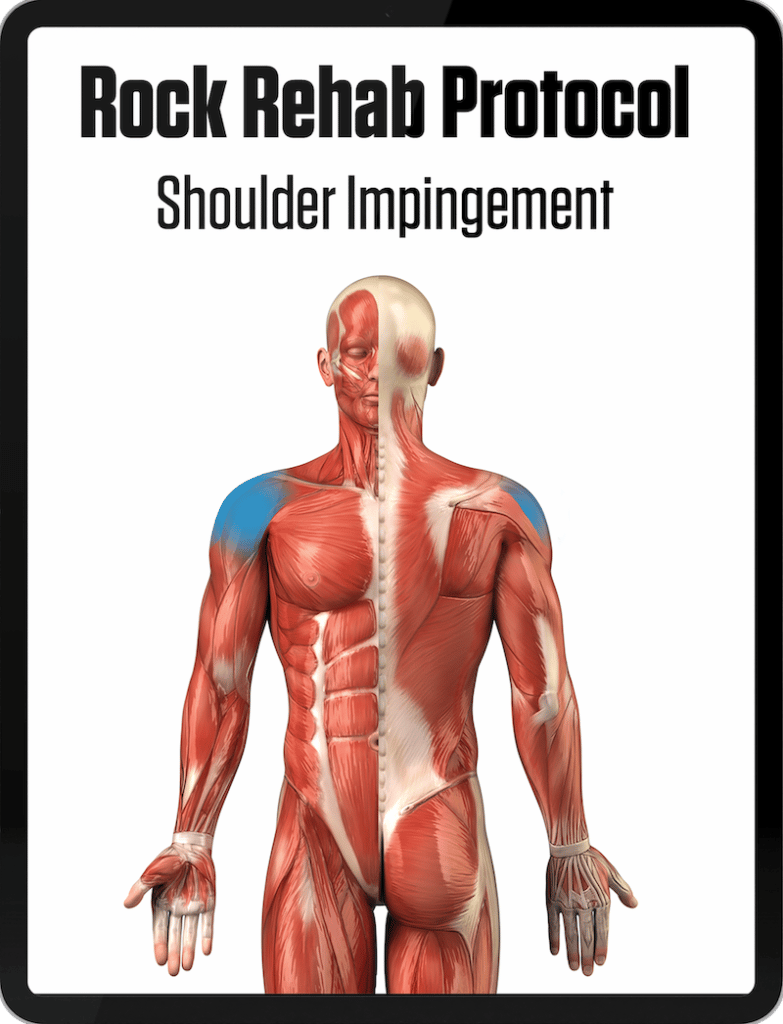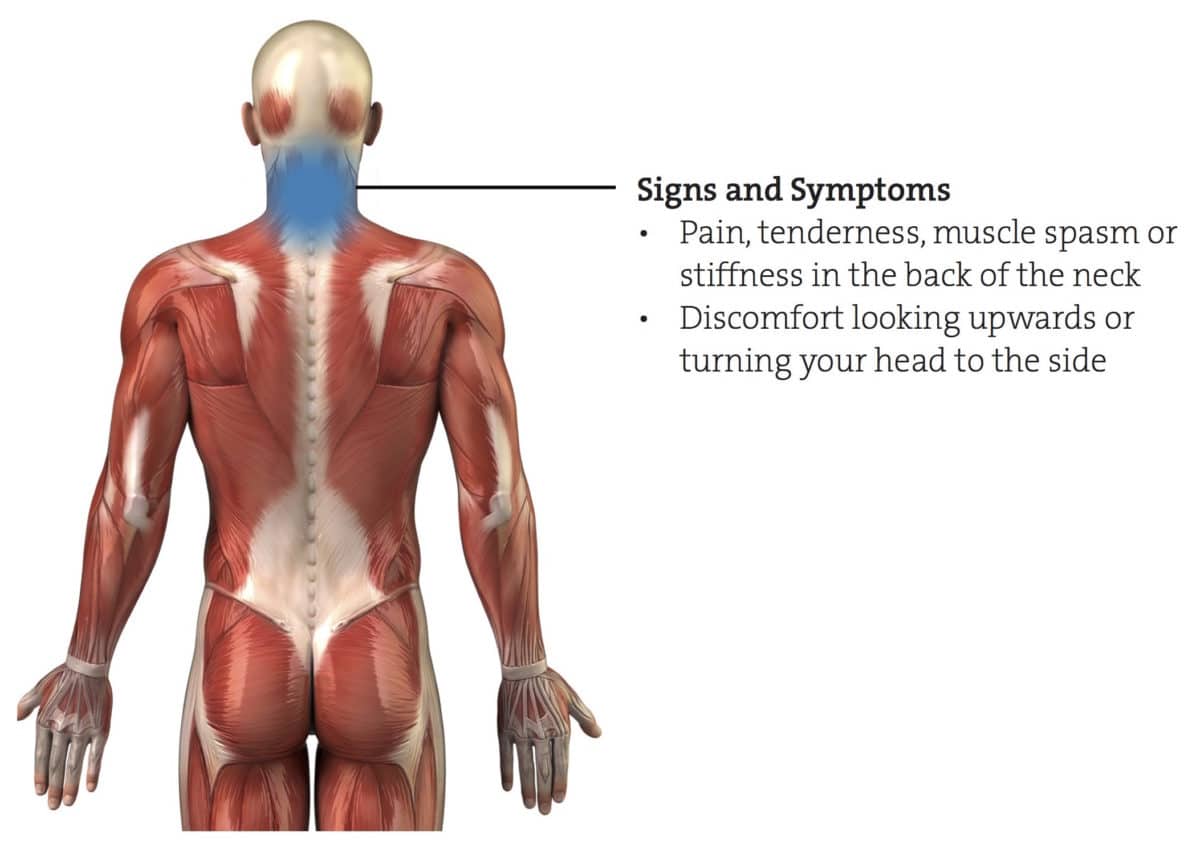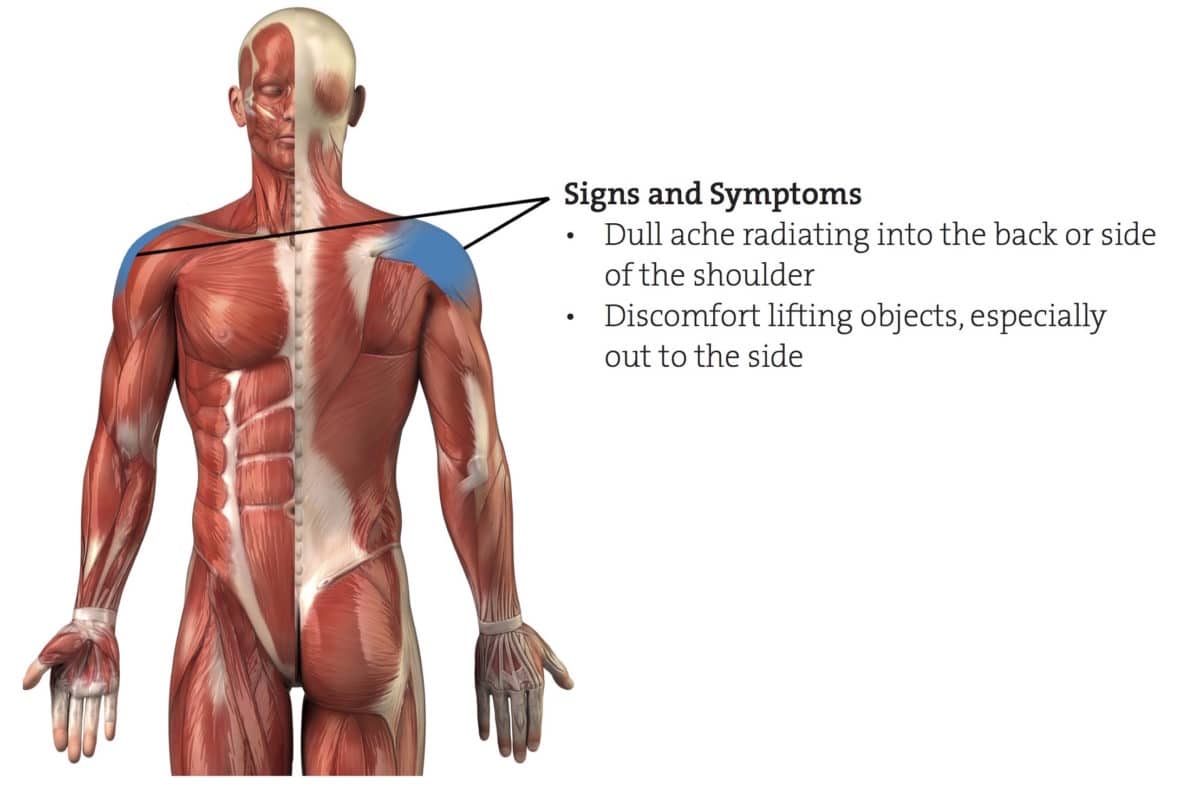Shoulder Impingement Climbing
The primary rotator cuff tendon in the shoulder, which attaches the upper arm bone to the shoulder blade, slides through a narrow passageway called the subacromial space. Repetitively moving the shoulder into stressful or suboptimal positions can cause this space to shrink and increase pressure on the tendon, which can generate pain. These aggravating movement patterns include climbing with the elbow in a chicken-wing position, mantling over the lip of a boulder or ledge, and jamming cracks with the thumb down. This injury is most commonly called shoulder impingement, but also goes by subacromial pain syndrome.
Shoulder impingement often begins with a dull ache and can grow into a sharp, show-stopping pain. For most people with this injury—especially those who try to push through—the pain comes in ebbs and flows, but never seems to fully go away.
Check out the video below for an exercise to help treat a shoulder impingement elbow injury.
Instructions
Start position: Wrap a full-length resistance band around your torso. Bend your knees and hips and lean your trunk forward to approximately 45 degrees. The closer to the floor that you can angle your trunk, the more challenging the exercise will be.
Bent Over Letter T
- Start with the arms straight down by your side and palms rotated forward.
- Engage your shoulder blade muscles and bring your arms into the air to form the letter T.
- Make sure that the thumbs stay pointed into the air.
Bent Over Letter Y
- Start with the arms down by your side and palms rotated forward.
- Reach overhead with your thumbs up and our arms straight to form the letter Y.
- Engage your shoulder muscles throughout the motion.
Bent Over Letter L
- Start with your elbows bent at 90 degrees and raised to shoulder height.
- Rotate your palms down so that they are facing the ground.
- Rotate your hands and shoulder backward forming the letter L with each arm.
- Make sure the shoulder rotates on a perfect axis and the elbow does not deviate up or down during the exercise.
- Engage your shoulder blade muscles throughout the motion.
What It Does
Activates the middle trapezius (T), lower trapezius (Y) and the rotator cuff (L) muscles that provide support and protect your shoulder while climbing. The bent knee and forward trunk for position simulates more closely the body during overhang climbing.
Frequency
3 sets of 8 repetitions once per day.
Self-Care Program
Interested in more exercises like this one? Want to learn how to determine the severity of your injury, choose a rehabilitation category, and start a self-care program to return back to climbing injury-free? Check out our rock rehab self-care protocol below:



